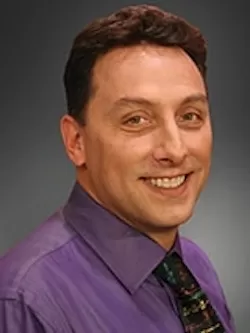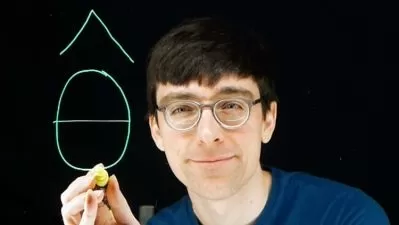Art and Craft of Mathematical Problem Solving
Paul Zeitz
12:14:39
Description
One of life's most exhilarating experiences is the "aha!" moment that comes from pondering a mathematical problem and then seeing the way to an elegant solution. And many problems can be solved relatively quickly with the right strategy. For example, how fast can you find the sum of the numbers 1 + 2 + 3 up to 100? This was famously answered in the late 1700s by the 10-year-old Carl Friedrich Gauss, later to become one of history's greatest mathematicians. Young Gauss noticed that by starting at opposite ends of the string of numbers from 1 to 100, each successive pair adds up to 101:
1 + 100 = 101
2 + 99 = 101
3 + 98 = 101
and so on through the 50th pair,
50 + 51 = 101
Gauss was already thinking like a good problem solver: The sum of the numbers from 1 to 100 is 50 × 101, or 5,050—obtained in seconds and without a calculator!
In 24 mind-enriching lectures, The Art and Craft of Mathematical Problem Solving conducts you through scores of problems—at all levels of difficulty—under the inspiring guidance of award-winning Professor Paul Zeitz of the University of San Francisco, a former champion "mathlete" in national and international math competitions and a firm believer that mathematical problem solving is an important skill that can be nurtured in practically everyone.
These are not mathematical exercises, which Professor Zeitz defines as questions that you know how to answer by applying a specific procedure. Instead, problems are questions that you initially have no idea how to answer. A problem by its very nature requires exploration, resourcefulness, and adventure—and a rigorous proof is less important than no-holds-barred investigation.
Think More Lucidly, Logically, Creatively
Not only is solving such problems fun, but the techniques you learn come in handy whenever you are presented with an unfamiliar problem in mathematics, giving you the confidence to try different approaches until you make a breakthrough. Also, by learning a range of different problem-solving approaches in algebra, geometry, combinatorics, number theory, and other fields, you see how all of mathematics is tied together, and how techniques in one area can be used to solve problems in another.
Furthermore, entertaining math problems sharpen the mind, stimulating you to think more lucidly, logically, and creatively and allowing you to tackle intellectual challenges you might never have imagined.
And for those in high school or college, this course serves as an enriching mathematical experience, equal to anything available in the top schools. Professor Zeitz is a masterful coach of math teams at every level of competition, from beginners through international champions, and he knows how to inspire, encourage, and instruct.
Strategies, Tactics, and Tools of Math Masters
The Art and Craft of Mathematical Problem Solving is more than a bag of math tricks. Instead, Professor Zeitz has designed a series of lessons that take you through increasingly more challenging problems, illustrating a variety of strategies, tactics, and tools that you can use to overcome difficult math obstacles. His goal is to give you the persistence and creativity to turn over a problem in your mind for however long it takes to reach a solution.
The first step is to come up with a strategy—an overall plan of attack. Among the many strategies that Professor Zeitz discusses are these:
- Get your hands dirty: Dive in! Plug in numbers and see what happens. This is a superb starting strategy because it almost always shows a way to keep on investigating. You'll be surprised at how often a pattern emerges that takes you to the next step.
- Think outside the box: Break the bounds of conventional thinking. Professor Zeitz shows you the original think-outside-the-box problem, in which the key idea is to disregard the boundaries of an implied box. He also explains why he prefers to call this strategy "chainsaw the giraffe."
- Wishful thinking: Turn a hard problem into an easy one by removing the hard part. For example, substitute small numbers for big ones. This is a confidence-builder that often gives you a partial solution that shows you how to solve the original problem.
- Change your point of view: Every problem has a natural point of view, such as a time or place where something is happening. Step back and try a different point of view. This could mean recasting an algebra problem as one in geometry, or vice versa.
The next step after choosing a strategy is to find a suitable tactic. For example, suppose you live in a cabin that is two miles north of a river that runs east and west, and your grandma's cabin is 12 miles west and 1 mile north of your cabin. Every day you go to visit grandma, but first you stop by the river to get fresh water for her. What is the length of the route that has the minimum distance?
You start with the "draw a picture" strategy. Once you have something to look at, you realize that the "symmetry" tactic will give you the shortest distance. Here's how it works: Imagine an alternate you on the same errand but on the south side of the river, in a mirror image of the situation on the north side. By drawing a line connecting your real cabin with the alternate grandma's cabin, and another line connecting the real grandma's cabin and the one belonging to the alternate you, you find an intersecting point at the river that is the perfect place to stop.
On some problems you also need a special-purpose technique—a tool. For example, the 10-year-old Gauss's trick of pairing numbers in the earlier example is a tool whose underlying idea—symmetry—can be applied to a wide range of problems. You learn the strengths, as well as possible pitfalls, of such tools.
Prepare for an Exhilarating Experience
Professor Zeitz compares this systematic approach to problem solving—in which you deploy strategies, tactics, and tools—to the mountaineer's quest to reach the top of a high peak. The mountain may seem insurmountable, but there is always a way to conquer it by proceeding one step at a time.
Looking at an impressive mountain, you can't but feel a sense of awe at the prospect of climbing it. Math problems, too, can produce this same reaction. But don't be daunted: You are more ready than you think. So sharpen your pencil, get some paper, and prepare for the exhilarating experience of The Art and Craft of Mathematical Problem Solving.
More details
User Reviews
Rating
Paul Zeitz
Instructor's Courses
The Great Courses
View courses The Great Courses- language english
- Training sessions 24
- duration 12:14:39
- English subtitles has
- Release Date 2023/06/06











